Epson EH-TW9400 Review
Arguably the biggest projector bargain of 2019
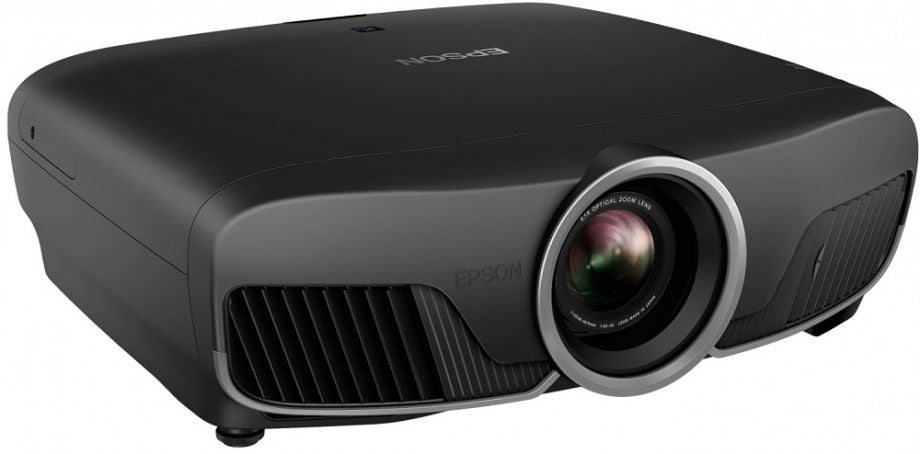

Verdict
Although not a true 4K projector, the Epson EH-TW9400’s SDR and HDR performance can’t be beaten right now without spending thousands of pounds more. In fact, it’s arguably the projector bargain of the year
Pros
- Good HDR and SDR pictures
- Great value for what’s on offer
- Lots of setup flexibility
Cons
- The colour filter takes a lot of brightness out of the picture
- Not a true 4K projector
- Needs ongoing care with setup to get the best out of it
Availability
- UKRRP: £2549
- USAunavailable
- EuropeRRP: €2799
- Canadaunavailable
Key Features
- 4K playback via pixel shifting technology
- Vertical and horizontal image shifting
Introduction
The Epson EH-TW9400 is a home cinema projector that supports both 4K and high dynamic range playback.
It delivers a claimed 2600 lumens of brightness, and even carries a wide colour filter to underline its HDR claims – which is all very promising indeed for a projector that only costs £2550.
Design
The Epson EH-TW9400 is one of the biggest projectors I’ve seen outside of the high-end – as in model costing £10,000 and more – home cinema world. While its W520 x D50 x H193mm dimensions are hardly coffee-table friendly, it wears its bulk pretty well.
For instance, Epson has gone to great lengths to round off all harsh edges and angles. The black finish is crisp and robust, and the heat vents on the front edge actually look quite stylish, rather than being just a necessary evil.
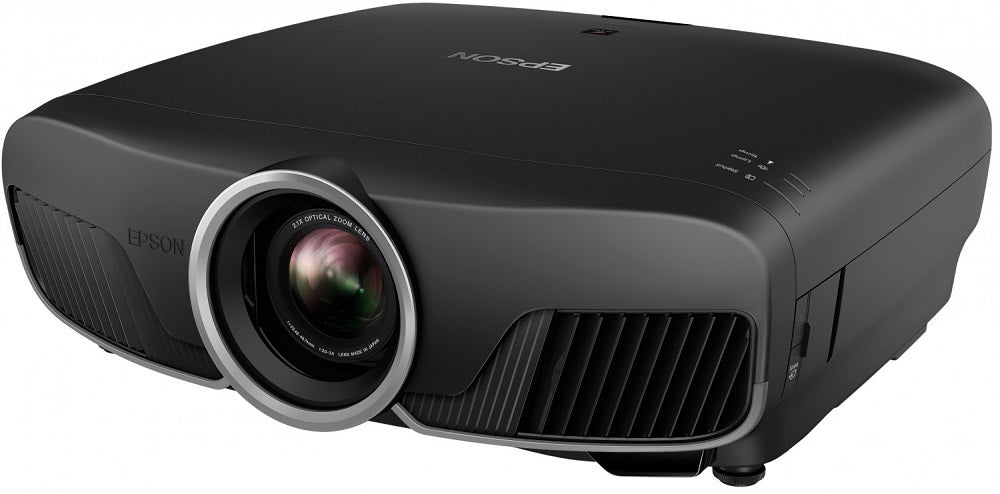
The extent of the cooling vents together with the size of the projector suggest that Epson is taking the challenge of venting heat from the TW9400 without running too noisily very seriously.
A promisingly large lens sits at the centre of the Epson EH-TW9400’s front edge, allowing the projector to add symmetry to its curvaceous charms. Finally, a silver metallic finish around the lens barrel, which extends into a thin strip along the bottom of the front edge, provides welcome relief from the stark blackness everywhere else.
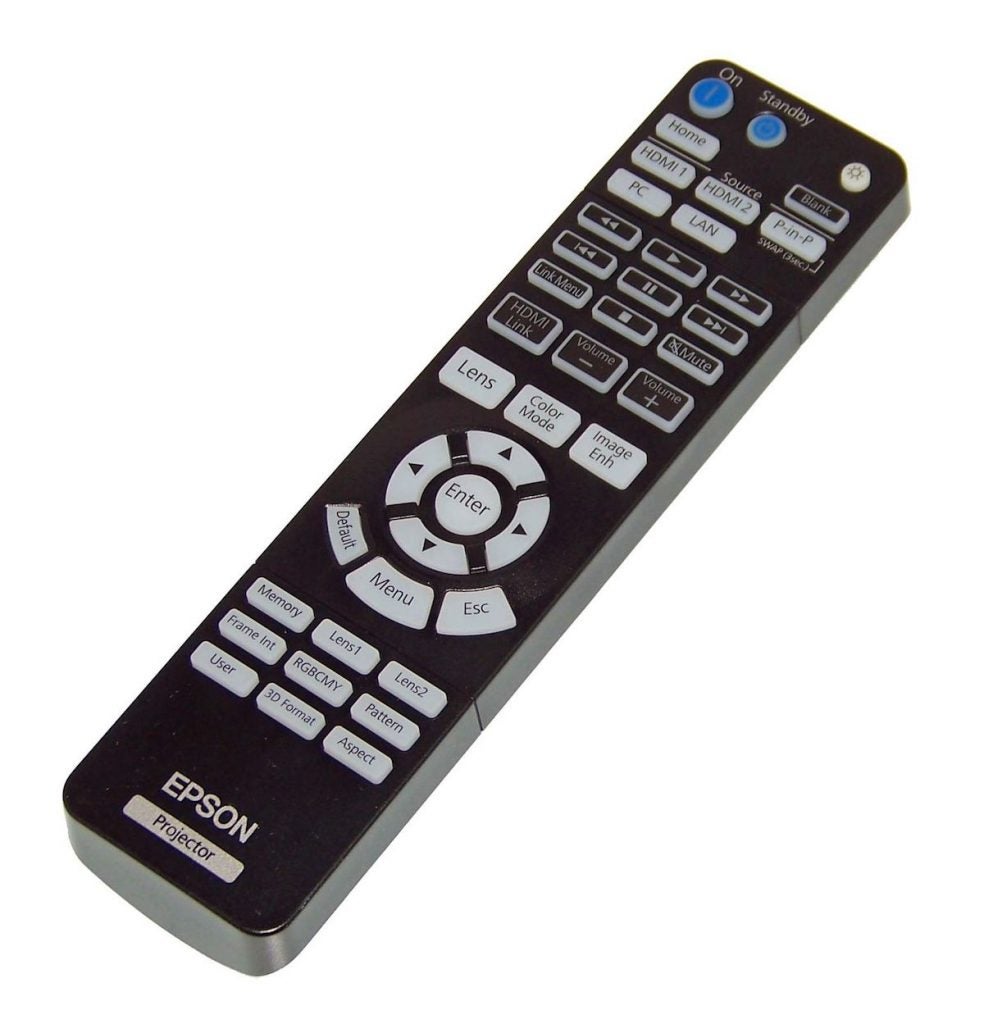
The projector’s uncompromising but cute look extends to its remote control. This is one of the largest remotes I’ve seen, but the space is used well to provide just the sort of spacious layout and large buttons you’d want on a handset that’s predominantly going to be used in the dark. The most used buttons are helpfully backlit, too.
Features
The Epson EH-TW9400 is an LCD projector capable of playing both 4K and HDR sources. However, it isn’t a native 4K projector. Instead, it uses pixel-shifting technology to deliver a pseudo 4K image from the way its arrangement of native 1920 x 1080 LCD optics.
This isn’t likely to result in the same level of sharpness and precision you get from Sony’s native 4K projectors. However, I’ve seen a sufficient number of other pseudo 4K projector systems to know that Epson’s 4K system – which it calls 4K Pro-UHD – could still deliver results that look better than straight HD.
The Epson EH-TW9400’s HDR support doesn’t just come from its ability to recognise and manage HDR10 and HLG signals. It also carries an impressive HDR adjustment feature that lets you find your preferred balance between the image’s brightness and dynamic range (how much of a light ‘gap’ there is between the image’s brightest and darkest extremes).
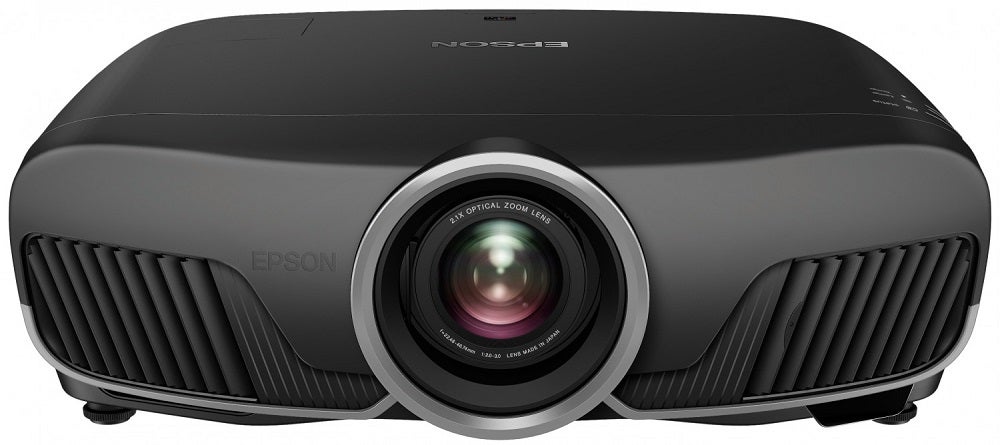
Affordable home projectors don’t deliver nearly enough brightness to handle HDR in the way that bright TVs can. As a result, it’s great to see Epson acknowledging this by offering increased flexibility over how you want the TW9400’s HDR images to look, rather than slavishly – and in this case, pointlessly – trying to adhere to HDR “standards”.
Even more impressively for its £2550 price point, the Epson EH-TW9400 carries a wide colour filter. Called in when you select the projector’s Digital Cinema picture preset, Epson claims this filter allows the TW9400 to deliver the entire so-called P3 colour range. This is significant for two reasons.
First, the P3 colour range is used in commercial digital cinemas. Second, it’s also the range typically used for mastering 4K HDR Blu-rays and streams. So if it works as billed, the wide colour filter could make the Epson EH-TW9400 unusually well-suited to today’s best-quality sources.
Another sign of how seriously the TW9400 takes its HDR duties can be seen in the way one of its HDMIs can handle 18Gbps streams. This enables playback (for the first time on an affordable Epson projector) of 4K and HDR at frame rates up to 60Hz.
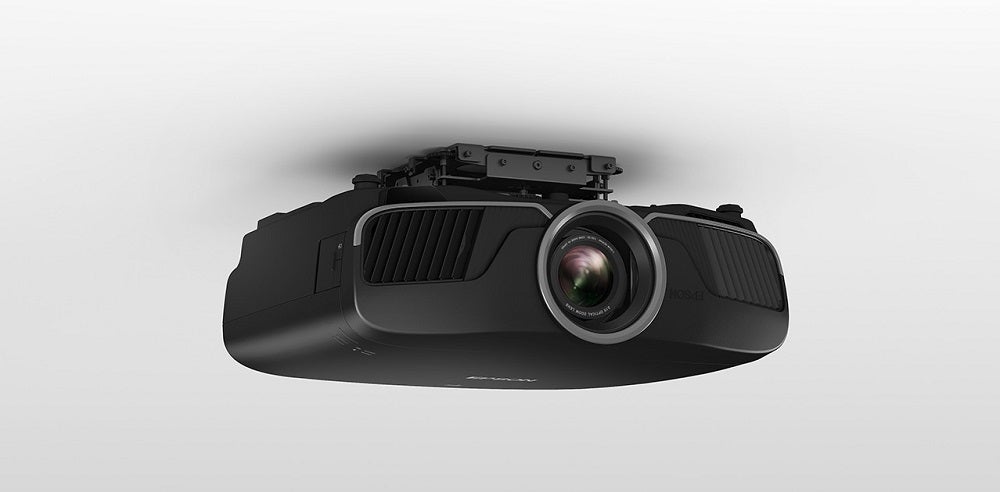
The Epson EH-TW9400 carries two HDMIs, along with an Ethernet port, two USBs (one for service updates only), a 12V trigger output for automatically firing up, say, an electric screen, and a PC port. Note that if you spend £300 more you can get the Epson EH-TW9400W, which introduces wireless HDMI support.
As usual with LCD projectors, the Epson EH-TW9400 carries a dynamic iris system to help it deliver greater contrast. In fact, with this iris in play the TW9400 is claimed to be capable of a huge contrast ratio of 1.2 million to one! In real world scenarios it’s unlikely you’ll actually get to see anything like this much contrast.
However, such a contrast ratio claim at least raises hopes of more satisfyingly deep blacks and punchier peak brights than you’d normally get for just over £2500.
The Epson EH-TW9400 supports 3D playback. Note, though, that none of Epson’s 3D glasses are included within the £2550 price.
Set-up
The Epson EH-TW9400 is easy to set up on one level. For starters, its lens is motorised, so you can adjust focus and zoom from the remote control. It also offers a very impressive 2.1x level of optical zoom, along with vertical and horizontal image shifting.
Picture presets are thoughtfully designed, providing easy access to a helpful variety of image flavours. The presets include a Game option that reduces the time the projector takes to produce its images to a very respectable 30ms.
The Digital Cinema mode, meanwhile, brings in the wide colour filter, while Cinema, Natural and Bright Cinema provide a variety of further movie and TV-viewing options if you find the Digital cinema setting too dark. More on this darkness in the Performance section.
Note that while Bright Cinema delivers much punchier, light images probably best suited for rooms containing a little ambient light, its colours look far more washed out than those of the Digital Cinema mode. The regular Cinema preset keeps colours closer to those of the Digital Cinema mode, but is too dark for rooms that aren’t completely blacked out.
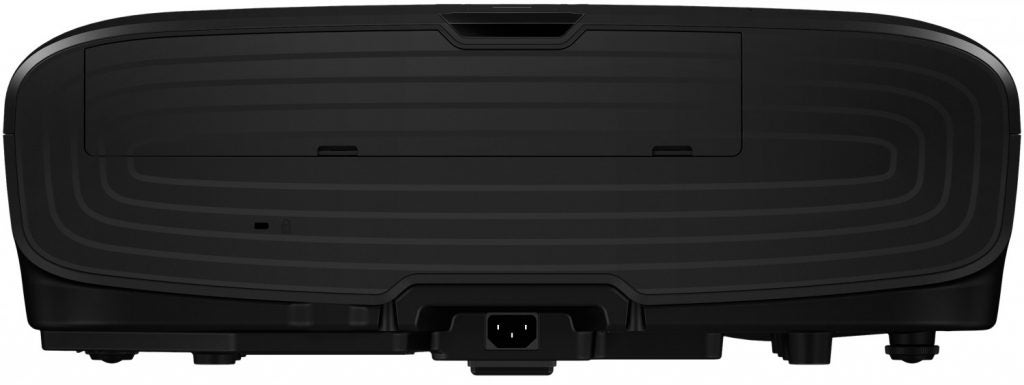
The Epson EH-TW9400 provides more image processing options than you might expect for its money. Many are best left off, though, since they tend to do more harm than good. Certainly, I didn’t see much value in the sharpness and detail enhancements, and the noise-reduction options soften the picture unnecessarily.
I was initially interested to see an option to swap the Epson EH-TW9400’s 4K pixel-shifting system for judder-reducing frame interpolation. I wouldn’t recommend making this swap while watching films or normal TV shows, however; it’s only worth considering for watching sport.
I generally used Epson’s Dynamic Iris on its Normal setting rather than Fast, as even in Normal mode I seldom noticed any distracting delays in the projector reacting to different content light levels.
You might notice a little noise from the iris if you have the projector sat near you, though. If you find this distracting, you may need to turn the dynamic iris feature off. Although, remember: this will cost you some black-level depth.
You’ll spend the most time using this projector’s long list of HDR brightness options. These let you adapt the EH-TW9400’s performance to suit the many different HDR mastering approaches being used in the 4K and HDR content world.
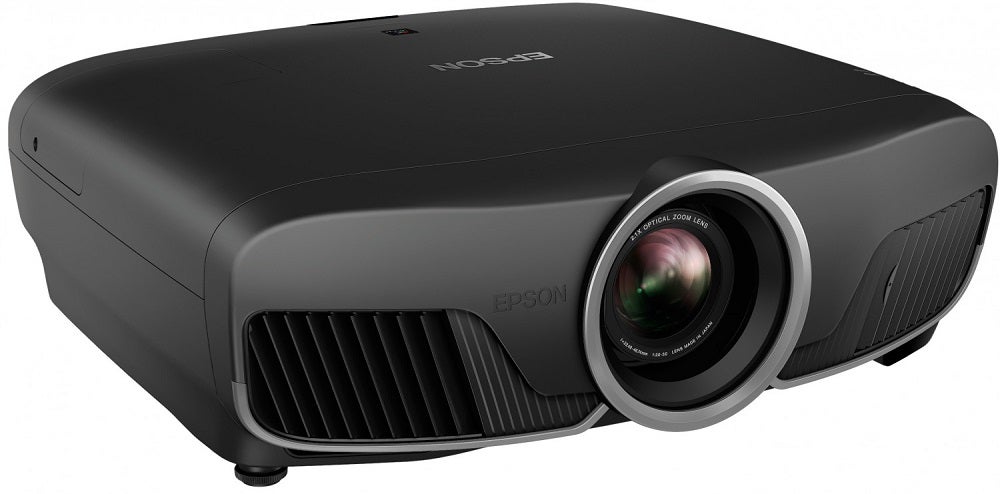
The only downside to this HDR flexibility is that you should revisit the HDR set-up features pretty regularly to always get the optimum performance. For instance, the settings that work for a disc or stream mastered to 4000-nit brightness peaks won’t work as well for discs mastered to 1000-nit peaks.
However, in the absence of a truly effective automatic HDR dynamic tone-mapping system in the Epson EH-TW9400, having so many manual tweaks is the next best thing.
Performance
So long as you’re willing to experiment with the Epson EH-TW9400’s HDR settings, it delivers the best HDR performance I’ve seen on a sub-£4000 projector.
Key to its success is the way it produces at least a sense of HDR’s expanded light range without making the picture’s average brightness level too dark. It’s true that the brighter you choose to make the TW9400’s “average” HDR pictures, the less of HDR’s full light range you see.
This a perfectly sensible compromise to make on a mid-range projector, however. And the Epson EH-TW9400 makes this compromise work more effectively than any other projector I’ve seen for the same money.
To sum this up, HDR pictures don’t end up looking like a dimmer, poorer relation to SDR pictures like they can on affordable HDR projectors.
The Digital Cinema mode’s colour filter also does a pretty amazing job for £2550 of delivering the expanded colour gamuts associated with HDR sources. Tones with HDR sources look clearly more washed out and flat without the colour filter in play.
However, the colour filter does knock a lot of brightness out of the image. In fact, brightness is reduced by as much as 40% according to Epson’s own figures.
While this might put some people off using the Digital Cinema mode (especially if they don’t have a completely blacked out room), for me it remains slightly brighter and therefore more watchable than similar filter modes found on one or two rivals in the sub-£5000 projector space.
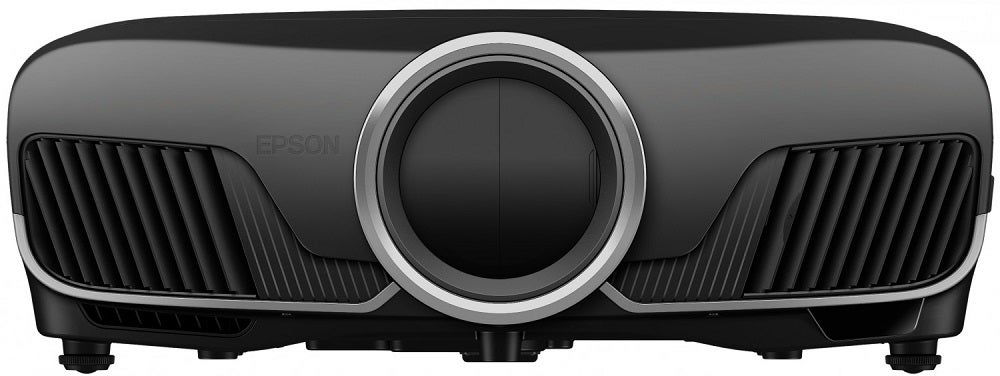
Retaining a touch more brightness with its wide colour filter means there’s a touch more volume to the Epson EH-TW9400’s colours, too.
The projector does let you play HDR sources in SDR, if you wish. Doing this gives you a typically brighter picture, since the projector has to go for a lower baseline brightness with HDR to maintain the impression of a wider brightness range. The picture is slightly less prone to detail crush in dark areas. As such, some users may prefer it – but it also lacks the intense highlights and extra sense of dynamism that HDR gives.
The Epson EH-TW9400’s black levels are good for such an affordable HDR projector, especially if you use the dynamic iris. There’s much less greyness hanging over dark scenes than I typically see with projectors that try to deliver enough brightness to live up to their HDR claims.
I’m not talking about the level of gorgeously natural, deep-black tones delivered by JVC’s more expensive D-ILA projectors. But dark scenes on the Epson EH-TW9400 certainly look convincing and consistent enough to keep you immersed in the action.
Nor does the Epson projector’s playback of 4K sources rival true 4K projectors when it comes to either detail or sharpness. The results do look slightly better – denser, for want of a better word – than standard full HD images, though. This is achieved without obvious artefacts such as excessive grain, double-edging or motion lag.
While it’s the Epson EH-TW9400’s HDR performance that mostly sets it apart from its rivals, it looks very good with HD and SDR Blu-rays and TV shows, too. Black levels still impress – which isn’t always the case with budget HDR projectors when playing SDR.
The sense of contrast and light management is beautiful. Colours, too, look ultra-refined, despite SDR’s narrower tonal range. This all gives films a detailed, natural, filmic feel that reminds you why SDR stuck around so long before HDR finally arrived.
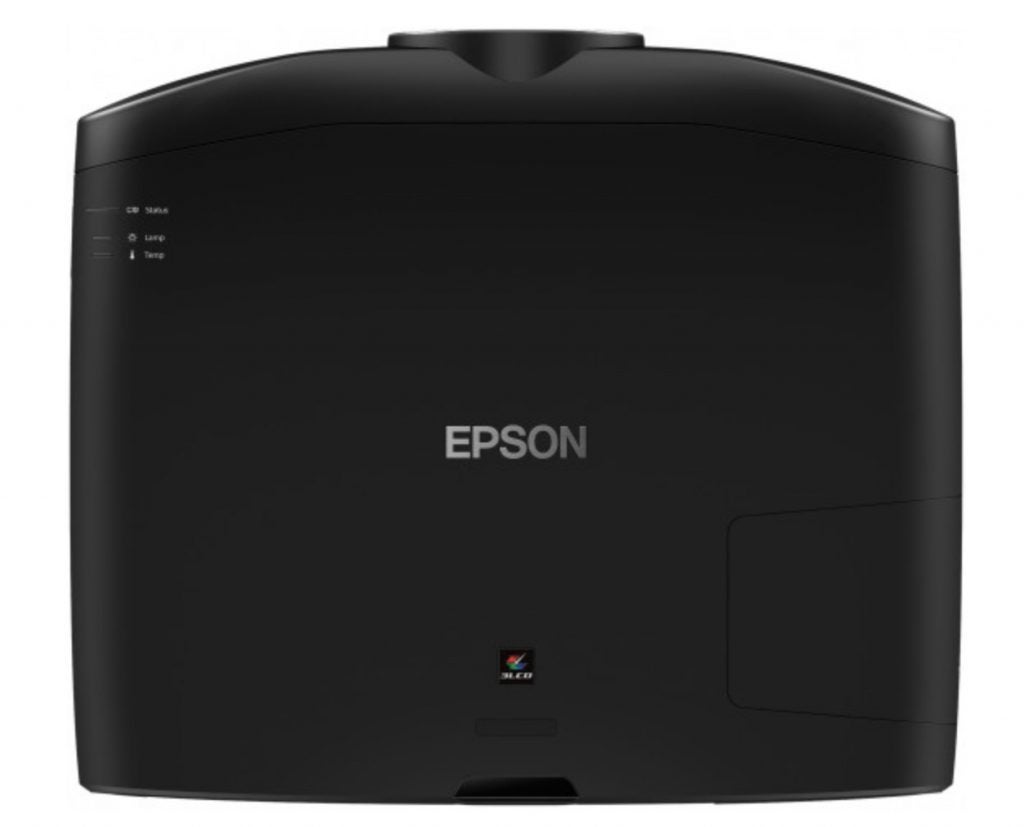
The “upscaling” of HD sources through the Epson EH-TW9400’s Pro-UHD system delivers a mild increase in the picture’s texture. While there’s nothing really transformational about it, you might as well leave the “upscaling” on since it doesn’t mess the picture up in any way.
With SDR content and its lamp set in Eco mode, the Epson EH-TW9400 runs impressively quietly. With HDR, however, you have to run the lamp high to achieve sufficient brightness – and the resulting extra fan noise is easy to hear. Personally, though, I didn’t find cooling noise excessive to the point where it routinely distracted me from what I was watching.
Happily, a pair of Epson 3D glasses I found tucked away at the back of a dusty cupboard worked perfectly with the EH-TW9400. And as someone who still enjoys a good big-screen 3D movie on the rare occasion I get the opportunity, I’m pleased to report that the Epson EH-TW9400 does a pretty great job of it.
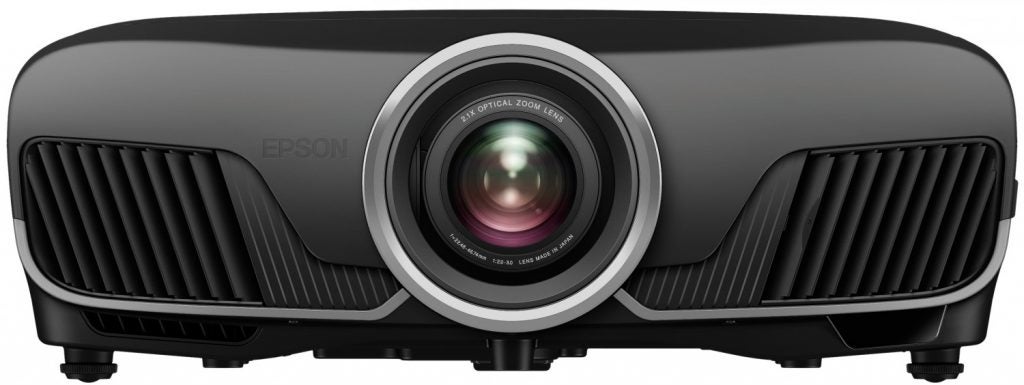
The sense of depth is excellent, regardless of whether you’re watching a quite small, intimate scene or a large-scale landscape shot. The brightness the EH-TW9400 has introduced for HDR also pays off with 3D.
Normally my biggest bugbear with active-shutter 3D of the sort provided by the TW9400 is how much darker 3D looks than 2D. But on this Epson, switching to 3D hardly feels like a brightness compromise at all.
I didn’t feel particularly aware of flickering while watching 3D, either – so long as I kept my viewing room blacked out. Plus, there was only the tiniest amount of crosstalk ghosting noise over the most extreme-contrast 3D content.
Finally, motion looks natural, avoiding the staccato or billowy look sometimes seen with 3D, and detail levels are excellent.
Should you buy it?
If you’re after fantastic value The Epson EH-TW9400’s performance with both HDR and SDR is superb for its price point, making it fantastic value for AV fans who want a serious home cinema projector but don’t have a high-end budget.
If you want a true 4K projector If you want a “true” 4K projector, meanwhile, the cheapest option is Sony’s VPL-VW270ES. This offers sharper, more detailed 4K pictures – but at £4999 it’s roughly twice the price
Verdict
Although not a true 4K projector, the Epson EH-TW9400’s SDR and HDR performance can’t be beaten right now without spending thousands of pounds more. In fact, it’s arguably the projector bargain of the year







